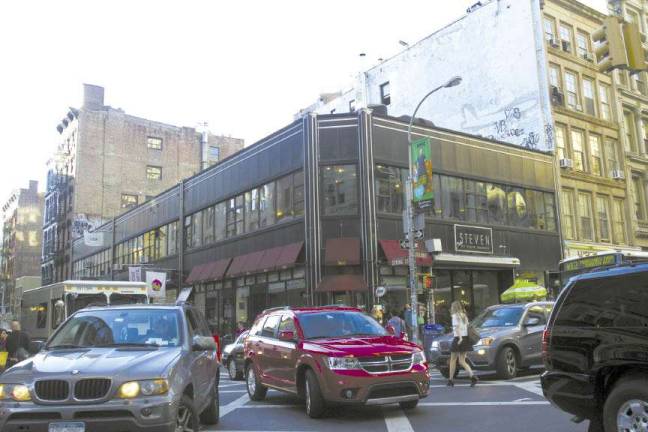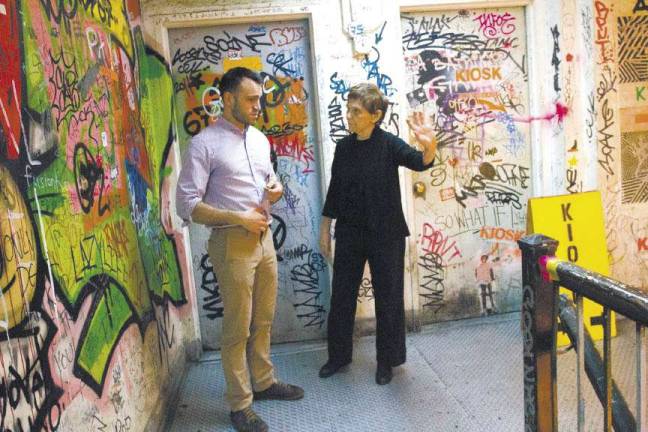Art Versus Real Estate in SoHo


The fight at 529 Broadway pits developers against some of the neighborhood's pioneering artists
Renowned feminist artist Mary Beth Edelson, 80, who has lived and worked in her studio adjoining 529 Broadway since 1975, said she was "blindsided" when she heard about the proposal four days before the originally scheduled community board meeting on Sep. 4, which had to be rescheduled due to the public outcry.
"How can somebody propose to build this huge thing and not even tell you?" asked Edelson, whose kitchen window overlooks the proposed site and whose art is in the permanent collections of the Museum of Modern Art and the Guggenheim Museum.
Marco Romeny, 39, who in 2005 opened his lovingly curated shop Kiosk on the second floor of 529 Broadway with his wife, Alisa Grifo, said he found out that the building had been sold on Christmas Eve of last year through a FedEx letter. Although Romeny calls the proposed demolition and development "sad," he said he is not surprised. "It's the ugly building in SoHo," he said.
However, several of the commissioners suggested that the developers speak with the neighbors about their concerns. They expressly named the Judd Foundation, which went before the commission over three years ago with its proposal to restore the work and living space of the artist Donald Judd, whom the New York Times called "one of the most important artists of the late 20th century." The east side of the artist's building at 101 Spring Street looks out on the proposed construction site, and representatives of the Judd Foundation, as well as the representative from the Society for the Architecture of the City, explained that the additional four stories would block the morning light and "east outlook that had a role in Donald Judd's art." Judd, who passed away in 1994, was one of the first artists to move into SoHo when he bought the cast iron building at 101 Spring Street in 1968. The restoration was completed in June and cost $23 million.
Attorney Stuart A. Klein, who is representing Edelson's co-op, said they had four months to appeal the commission's decision.
A few hours after the Landmarks Preservation Commission meeting, Christopher Nazzaro, 32, who works at Kiosk, stood on the roof of 529 Broadway. He testified at the meeting earlier to the cultural significance of the interior of the building, especially the graffiti lining the walls of the passageway, which he said tourists regularly come to photograph.